On our website, we provided the detailed information regarding German clinics that deal with cardiac surgery.
Modern cardio surgery is a safe method of fibromuscular hollow organ abnormalities abolition. This area of medicine provides an opportunity to prevent myocardial infarct and release a patient from aneurysm which is a disease consequence.
Heart surgeries in Germany are carried out in cases when non-conservative methods are not efficient anymore and a patient starts feeling worse. Moreover, surgical intervention may become the only way in cases of patient’s untimely reference to a doctor.
In 2018, 410,840 heart surgeries were performed in German hospitals. That was around 23 percent more heart surgeries than ten years ago, as the Federal Statistical Office announced on the occasion of World Heart Day (September 29, 2019).
Most often, doctors implanted a pacemaker (127,113 times). In second and third place were the creation of a bypass (64,430 procedures) as well as removal, change or correction of a pacemaker (60,586 procedures). So-called minimally invasive surgeries on heart valves were performed 35,877 times. The patient is operated through natural openings in the body or through minimal incisions. In a further 24,223 cases, heart valves were replaced with prostheses.
According to the statisticians, the cardiac patients were on average 71 years old at the time of the intervention. Almost two thirds were men. On average, they were hospitalized for eleven days for the procedure.
Heart surgeries in Germany
If a patient visits a qualified doctor in a specialized clinic in time, noticing the first heart disease symptoms, the surgery can be avoided. But situations when a patient needs a surgical treatment are more often. Heart surgeries in Germany allow getting rid of the following problems:
- Ischemic heart diseases come out of incomplete blood delivery of functional muscular middle layer.
- Heart abnormalities that can induce cardiac insufficiency due to valve defects. Due to this, valve plugs cannot tightly close and pass blood against a natural flow.
- Ventricular and intra-arterial septum defects lead to blood penetration from the cavity with heavy pressure to the cavity with more slight tension. Due to such process, venous blood gets mixed with arterial blood that results in → results in tissue oxygen deprivation.
- Heart rhythm disorder that can occur as arrhythmia, bradycardia, cardiac arrest, simple sinus tachycardia and extrasystole.
It’s important to know that some cardio handicaps have both acquired and intrinsic characters. That is why a surgery is not cured noticeably and can be developed to the stage that surgeries in Germany are already vitally necessarily.
Cardio treatment options: closed, opened and X-ray heart surgeries in Germany
While performing closed surgeries doctors don’t affect a patient’s heart and carry out these surgeries without direct surgical aggression. In a case of open diseases, heart cavity defects can be fixed with a help of a special cardiac valve pump.
Interventional heart radiology surgeries in Germany were performed quite recently, so in virtue of technological progress such treatment method is the top one. Surgery is carried out using slim balloon catheters, patches and expanding tubules. Heart surgeries in Germany are performed together with early technics, creating and completing the surgery process.
Heart surgeries in Germany: valve replacement
Elderly people oftentimes suffer from stenosis which is an aortic valve narrowing. This disease is a quite widespread disorder that can lead to such tissue abnormalities as sclerosis and calcinosis. When a patient has a stenosis, it means that valve replacement is required. During such surgery, a patient’s heart gets a prosthesis being implanted and placed at the coronary stent. Valve replacement influences hemodynamic status of a patient and doesn’t need any mechanical aorta injury or using any kind of special equipment.
Clinical scores allow using two types of prostheses: valve prosthesis and another prosthesis that is based on expandable stent. The first type of valves is used during retrograde access replacement through the femoral artery or under a collar bone.
Congenital heart defect surgeries
Congenital heart diseases are successfully treated in German clinics no matter what is the complexity of a particular disease or its stage. Highly-qualified doctors often choose the optimal treatment method that helps quickly reanimate a patient.
Traditionally in cases of heart defects doctors use the conventional surgical intervention. If a patient has some disease complications, then treatment is provided in stages. If a patient cannot be treated even with a help of surgical intervention, the only option to cure this patient is to replace his heart valve in Germany.
Defibrillator set-up during a heart surgery in Germany
In cases, when a patient’s heart rate is defective, doctors set up a defibrillator that stimulates heart function at the necessary rate. This procedure is conducted in cases of hypertrophic cardiomyopathy, Brugada syndrome, ventricular fibrillation and QT prolongation syndrome. The procedure is carried out in German clinics at a high level because of qualified specialists with formidable experience in this area.
Aneurysm treatment with a help of heart surgery in Germany
Aneurysm is a “slow” disease that bulges out artery or vein walls that are stretched or becoming thin. German clinics use modern treatment technics to cure this disease. Endovascular surgery of blood vessels is one of the most effective and widespread methods. This surgery is usually carried out with a help of special medical appliances under radial imaging control.
Please, contact us in order to get in touch with professionals from the offered clinics. We will be pleased to help you and provide the best treatment!
Open-heart Surgery
The heart is literally a life center. In human body it carries out the most important function of supplying all the organs and tissues with blood enriched with oxygen and nutrients. But the heart is a muscle penetrated with vessel and in average life cycle it pumps over 5.7 million liters of blood, so earlier or later it starts getting tired. There are plenty of diverse heart disorders of different degrees in modern diagnostics, and some of them could require of operational approach. Among the surgical interventions, open heart surgery is still the most applicable in many cases.
Heart Diseases with Indications for Surgery
Heart surgery helps to cure many diseases of the cardiovascular system, that are not amenable to standard therapeutic procedures, as:
- congenital or acquired heart disease
- coronary heart disease
- irregular heartbeat causing ventricular fibrillation
- traumatic issues.
Cardiac Operations in German Clinics
The cardiology centers in Germany are aimed to reduce human mortality of heart malformations.
Due to the modern technical means supporting cardiac surgeon’s skills, nowadays it is possible to cure the diseases considered as mortal in the past. When the first intracardiac open heart surgery was performed in 1952, it seemed as nearly the miracle, but now these kinds of operations have become quite routine and a number of clinics offers the services on restoration of heart function using invasive techniques.
The most common cardiovascular surgery is Coronary Artery Bypass Grafting (CABG), which performed through the long incision in the breast with open view of the heart. This procedure is normally done to replace narrowed heart arteries with alternative way of blood supply and it lasts for 3-4 hours. The heart is stopped during operation and replaced with cardiopulmonary bypass.
But CABG is just a one of various operations aimed to restore a normal functioning of the heart muscle, valves and great vessels. Defective valve replacement, aortic pathologies correction, and even transplantation of a donor heart are offered in the medical centers of Germany, where the proficiency of physicians allows to carry out the most difficult treatments returning the health to patients who almost left all the hopes for normal life. The complex diagnostics equipment, comprehensive method and high professional surgeons together with typically German quality approach gives to every patient good chances not significant improvement.
Postoperative Care
Recovery from open heart surgery is a long process that requires a special attention of professional medical staff. The modern and well maintained medical centers in German clinics have all the necessary facilities to shorten rehabilitation and make it more effective. After intensive care a patient remains in hospital under constant thorough observation till complete recovery. In a first stage, it is very important to get rid of inflammations and side effects, as in this case we deal with a big wound, which could affect with different complications. The doctors examine reactions and changes in the state of patient and take timely measures if something goes wrong. The part of postoperative care is a pain relief, but, actually, that pain is not that strong as it was before surgery.
But rehabilitation does not finish in a hospital for in-patients; it lasts long after with periodical checkup and supporting procedures. It is necessary to develop a program of step-by-step returning to everyday activities during postoperative period. It starts from minimal load to the body and follows by gradual increasing of regular exercising till a point of normal functioning.
Modern Methods in German Clinic
The classical operations always were performed, when the heart of a patient is open and stopped beating. But, currently, it became possible to carry out complex interventions on the beating heart without involving heart-lung apparatus. It is reached my means of minimally invasive open heart surgery, which significantly reduces the risks related to the use of heart-lung machine and possible inflammations after the surgery. In this case, a number of small incisions in a chest are made instead of big one and operation is made using robotized technology under the accurate control of the cardiac surgeon.
If you are interested in treatment of the heart disease with operative methods and need further assistance, please contact one of German medical centers below for consultation. Competent advice of the doctor is a first step to strong health without pain and discomfort. The diagnostic equipment and high professionalism of specialist give you a guarantee of precise diagnosis, and timely carried surgery could save you from many risks and complications which could develop if neglected. Your health is our job and we can do it with our open heart and caring hands.
Minimally Invasive Heart Surgery
German Medical Group will inform you in detail about your future treatment in Germany. Germany is one of the most popular places for treatment of cardiovascular problems. More than 100,000 cardiac surgical operations are conducted in Germany every year, the largest share of which is accounted for by structural heart defects and coronary artery bypass grafting (CABG).
Minimally invasive operations involve hybrid techniques and are done to treat the following cardiac diseases:
Coronary artery bypass grafting / cardiac surgery
Coronary artery bypass grafting is a kind of cardiac surgery, which is carried out to treat coronary heart problems and/or ischemic heart disease. Coronary artery disorders result from severe metabolic disruptions in cardiac vessels, which contribute to the formation of atherosclerotic plaques in the vessels (atherosclerosis), causing them to narrow and impair the nutrition of the myocardium.
The surgery consists in the implantation of a graft to bypass the constricted section of a vessel. The minimally invasive coronary artery bypass grafting method reestablishes blood flow in the myocardium and rebuilds its function.
Standard and invasive heart valve treatment / cardiac surgery
The majority of heart valve diseases require surgical treatment. Usually, German cardiologists do their uttermost to preserve the natural valves by repairing them and eliminating structural defects.
Severe cases may require replacement of affected valves with artificial ones. Based on the situation and underlying diseases, if any, doctors can pick up the most appropriate type of prosthetic cardiac valve. Every patient is invited to a conversation on the pros and cons of each type of artificial valve (biological, mechanical, etc.) based on his/her individual situation. Implementation of the latest scientific achievements enables us to conduct non-invasive high-tech cardiac operations.
Aneurism removal / cardiac surgery
An aneurysm is a bulge in the wall of a blood vessel, which, if it grows larger than 2 inches in diameter can break and cause death. Therefore, this condition requires surgical treatment.
The ablation of atrial fibrillation / Cardiac surgery
Atrial fibrillation is one of the most common types of heartbeat disorders. In cases whereby pharmaceutical treatment methods are no longer effective, atrial ablation is applied. Mainly, this procedure is aimed at preventing apoplectic seizures.
Pacemaker implantation
Indications for pacemaker implantation (cardiac surgery):
- Acute cardiac arrythmia
- Congenital heart diseases
- Cardiogenic shock
Defibrillator Installation
In Germany, installation of defibrillators involves the use of high-tech equipment. Our highly qualified doctors have a great experience in performing such operations with guaranteed safety and integrity. Indications (cardiac surgery):
- Hypertrophic cardiomyopathy
- Brugada syndrome
- Long QT syndrome (LQTS)
These conditions used to require open-heart operations with a complete dissection of the breastbone and cutting open the ribcage. Today, cardiac surgeons use innovative techniques, which require but a minor incision.
Such operations are no less effective than open-heart surgeries. This minimally invasive hybrid technique reduces pain and aggravations, such as sternum inflammation, bleeding and respiratory inflammation. Patients end up with only a small post-operative scar. Minimally invasive treatment does not require a lengthy hospital stay and ensures quick rehabilitation.
Heart Surgery Cost
The clinics of Germany offer the full range of services for the treatment of pathologies of the heart and the cardiovascular system. Below we provide information on the most common methods of heart surgery in Germany and the cost for these services.
Here below you can find some additional information about the treatment methods and average cost.
Coronary artery bypass grafting (CABG) is a type of heart surgery which results in the creation of new ways for the blood flow bypassing the completely or partially occluded part of the blood vessels of the heart. In other words, new coronary arteries are made. At CABG the veins of the lower extremities or the arteries, supplying blood to the chest wall, are used. The usage of the arteries, supplying blood to the chest wall, is more physiological at CABG because the arterial shunts in their patoanatomic structure are closer to one’s own coronary vessels.
At present, the method of minimally invasive cardiac surgery is very developed when performing coronary artery bypass grafting. In this case heart surgery is conducted through a small incision without a cardiopulmonary bypass apparatus. This type of heart surgery is better tolerated by patients, not to mention the cosmetic effect. Endoscopic cardiac surgery is gaining more popularity now.
The cost of coronary artery bypass surgery (CABG) is about 25.000 euro. After CABG a three-week course of rehabilitation is recommended, whose cost is from 5000 euro.
Average heart surgery prices
Below we give the table, which shows only approximate rates for heart surgery in Germany.
| Heart Surgery in Germany |
Average price (cost) in euro |
| installation of aortocoronary venous shunts |
from 34 300 |
| cardiac surgery and reconstruction of the valve at congenital heart disease |
from 30 000 |
| aneurysm of the wall, septal defect, cardiac surgery without reconstruction of the valves |
about 35 000 |
| Congenital valve defect, an operation with a heart-lung apparatus, attendance in the surgical intensive care unit, removal of stitches, till passing to the rehabilitation unit |
about 32 500 |
| correction of the valve |
about 33 500 |
| correction of two valves |
about 40 500 |
| episodic therapy, correction of the valve |
about 40 000 |
| Maintenance and change of an implanted defibrillator |
about 44 000 |
| Cardiac catheter examination with coronaroangiography |
about 44 000 |
| without dilation |
about 1 500 |
| with dilation |
about 5 500 |
| The usage of the extracorporal one-ventricular support pump system for blood circulation with a pneumatic or electromagnetic drive |
about 30 000 |
| The usage of the extracorporal bi-ventricular support pump system for blood circulation with a pneumatic or electromagnetic drive |
about 42 500 |
| The change of the extracorporal univentricular support pump system for blood circulation with a pneumatic or electromagnetic drive |
about 13 500 |
| The change of the extracorporal univentricular support pump system for blood circulation with a pneumatic or electromagnetic drive |
about 20 000 |
Electrophysiological examination in Germany
Nowadays, in Russia there are no analogues for this relatively new examination of the heart in Europe. Thanks to this unique method it is possible by means of local irritation of the bundles of the cardiac conducting system by electric current to find out and eliminate the dangerous heart rhythm disorders (atrial fibrillation, extrasystole), which are the most common cause of death.
This method of examination is recommended to the patients, who have sudden losses of consciousness. Besides, atrial fibrillation and WPW syndrome are treated effectively in this way.
The cost of this examination is about 9000 euro in Germany.
Electrocardiography
The procedure of electrocardiography registers cardiac electrical activity. With its help it is possible to see the violations of the heart rates. The examination is conducted both during exercise (running, walking, biking – a loading test) and at rest.
Echocardiography, when the heart is examined by ultrasound, provides more accurate functional and anatomical information.
Coronary angiography is performed in the angiography laboratory. The examination is a roentgenological method, at which the severity of the injury, risks, and the location of the critical stenoses are estimated and a therapeutic approach is determined.
Intravascular ultrasound study is an invasive examination of the artery by means of a catheter equipped with an ultrasonic sensor. The intravascular ultrasound method gives maximally accurate information about the internal state of the artery.
Coronary angiography
Coronary angiography is a radiopaque research method, which is the most accurate and reliable way of the diagnosis of CHD (coronary heart disease), allowing to determine precisely the location, nature, and the degree of narrowing of the coronary artery. In the diagnosis of CHD this method has become the “gold standard”, it enables to solve the question of the type and amount of further therapeutic procedures such as bypass surgery and balloon angioplasty.
In Germany, the complex examination of the heart, including coronary and electrocardiography, costs from 6.500 euro. In comparison with other foreign clinics the same examination of the heart will cost:
- In Austria the cost is from 8500 to 18000 euro;
- In France the cost is 7000-14000 euro;
- In Israel the cost is 5000-15000 euro;
- In the USA the cost is 7000-22500 euro;
- In Switzerland the cost for the full range of the services is about 27000 euro.
If you have any questions in regard to heart surgery and the upcoming treatment of the heart in Germany, our company will provide you with a detailed consultation, concerning the organization of the treatment and transfer, and the cost of the heart surgery.




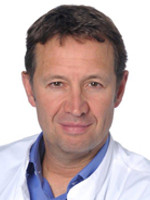
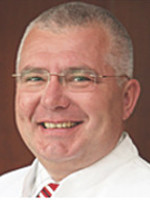

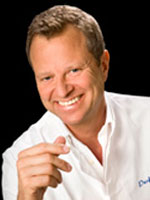

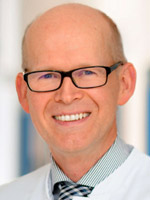

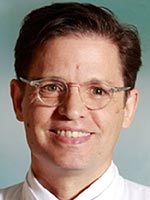

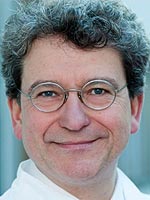









 Loading ...
Loading ...


